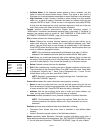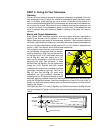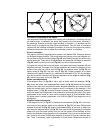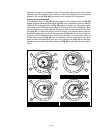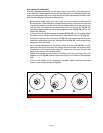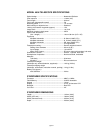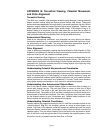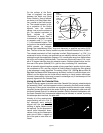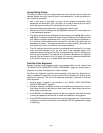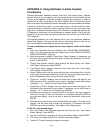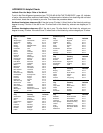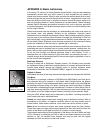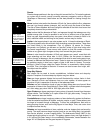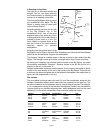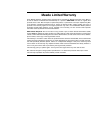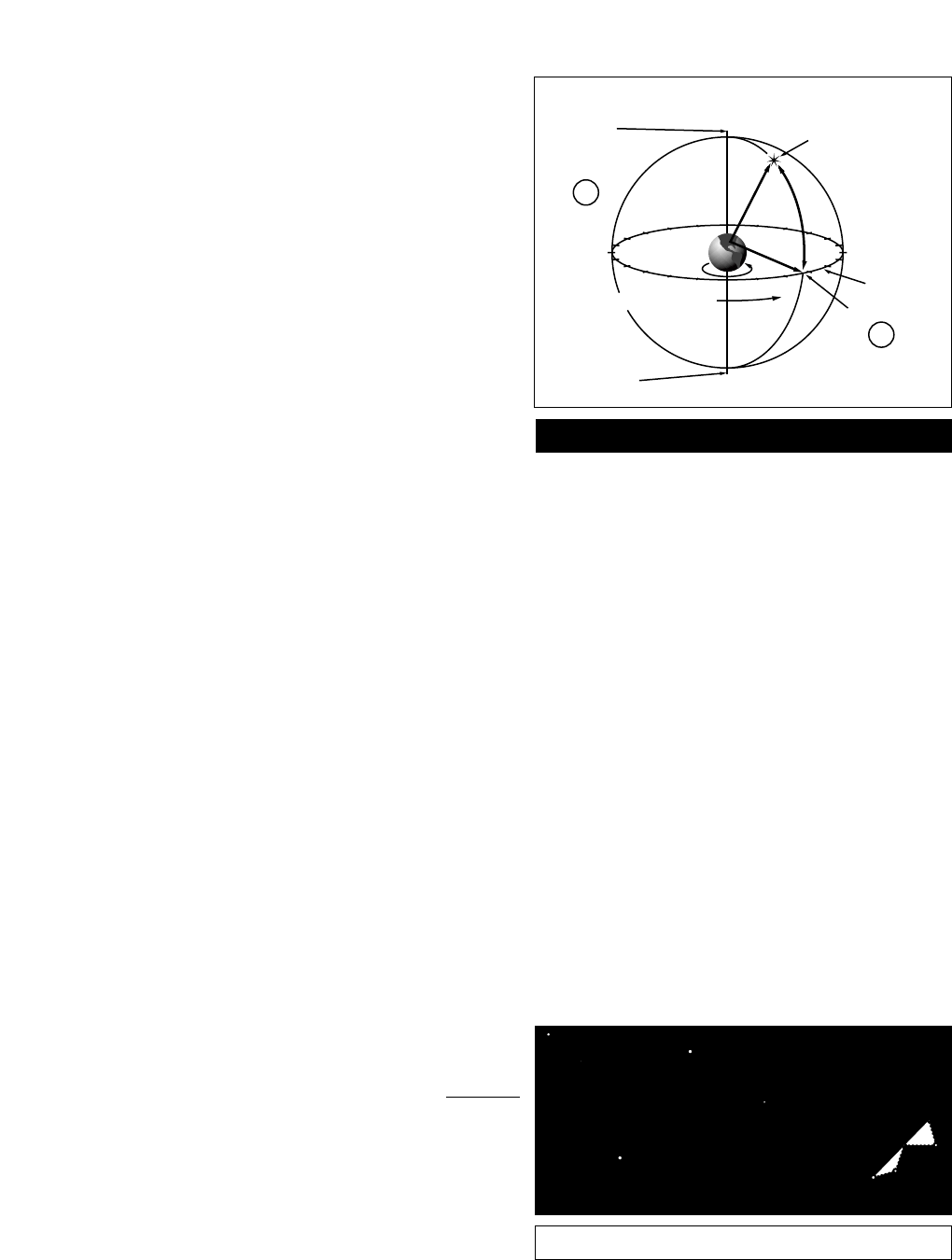
page 40
On the surface of the Earth,
“lines of longitude” are drawn
between the North and South
Poles. Similarly, “lines of latitude”
are drawn in an East-West direc-
tion, parallel to the Earth's equa-
tor. The celestial equator is sim-
ply a projection of the Earth's
equator onto the celestial
sphere. Just as on the surface of
the The celestial equivalent to
Earth latitude is called
“Declination,” or simply “Dec.” It
is measured in degrees, minutes
or seconds north ("+") or south
("-") of the celestial equator. Thus
any point on the celestial equator
(which passes, for example,
through the constellations Orion, Virgo and Aquarius) is specified as having 0°0'0"
Dec. The Dec of the star Polaris, located very near the North Celestial Pole, is +89.2°.
The celestial equivalent to Earth longitude is called “Right Ascension,” or “R.A.” It is
measured in hours, minutes, and seconds from an arbitrarily defined “zero” line of R.A.
passing through the constellation Pegasus. R.A. coordinates range from 0hr0min0sec
up to (but not including) 24hr0min0sec. Thus there are 24 primary lines of R.A., locat-
ed at 15 degree intervals along the celestial equator. Objects located further and fur-
ther east of the prime (0h0m0s) R. A. grid line carry increasing R.A. coordinates.
With all celestial objects therefore capable of being specified in position by their celes-
tial coordinates of R.A. and Dec, the task of finding objects (in particular, faint objects)
in the telescope is vastly simplified. The setting circles, R.A. (15, Fig. 2a) and Dec (9,
Fig. 2a)of the Meade 4504 Telescope may be dialed, in effect, to read the object coor-
dinates, and the object can be found without resorting to visual location techniques.
However, these setting circles may be used to advantage only if the telescope is first
properly aligned with the Celestial Pole.
Lining Up with the Celestial Pole
Objects in the sky appear to revolve around the Celestial Pole (actually, celestial objects
are essentially “fixed,” and their apparent motion is caused by the Earth’s axial rotation).
During any 24 hour period, stars make one complete revolution about the pole, making
concentric circles with the pole at the center. By lining up the telescope’s polar axis with
the North Celestial Pole (or, for observers located in Earth’s Southern Hemisphere, with
the South Celestial Pole), astronomical objects may be followed, or tracked, by moving
the telescope about one axis, the polar axis.
Virtually all of the required tele-
scope tracking will be in R.A. (if
the telescope were perfectly
aligned with the pole, no Dec
tracking of stellar objects would
be required). For the purposes of
casual visual telescopic obser-
vations, lining up the telescope’s
polar axis to within a degree or
two of the pole is more than suf-
ficient.
14
15
16
17
18
19
20
21
22
23
0
1
12
11
10
9
8
7
5
6
4
3
2
13
Earth’s
Rotation
0 Dec.
South
Celestial
Pole
Right Ascension
Star
Celestial
Equator
-90 Dec.
+90 Dec.
North
Celestial
Pole
(Vicinity
of Polaris)
D
e
c
l
i
n
a
t
i
o
n
1
2
Fig. 31: Celestial sphere.
Polaris
Little Dipper
Big Dipper
Cassiopeia
Fig. 32: Locating Polaris.



